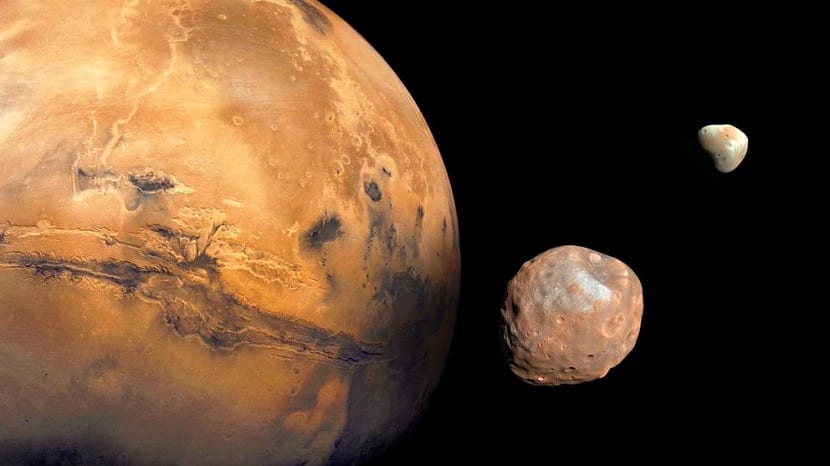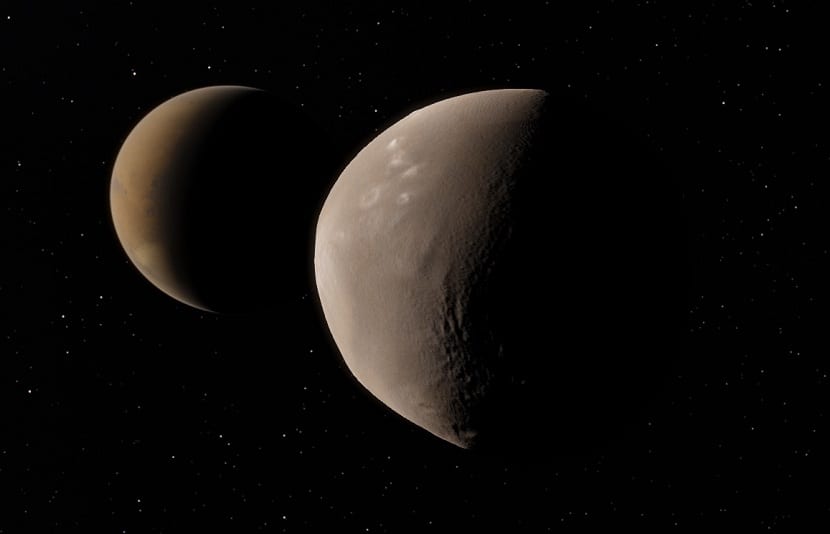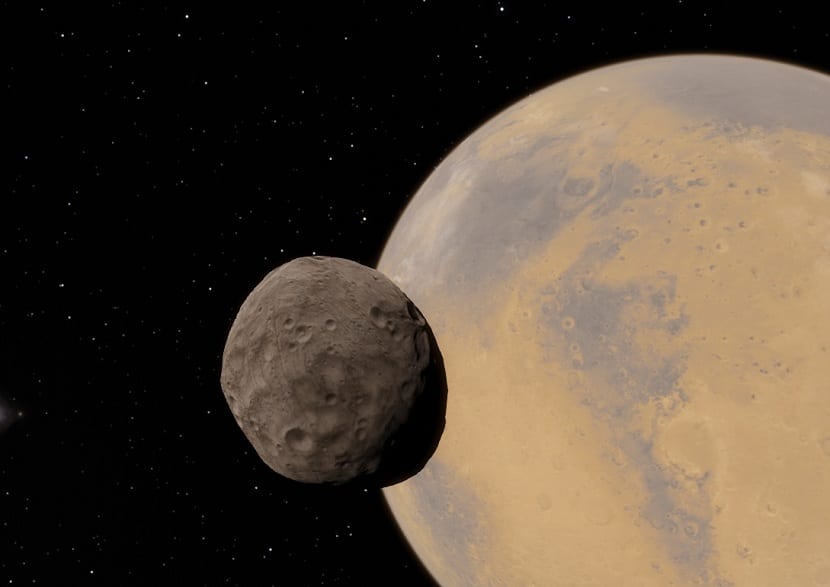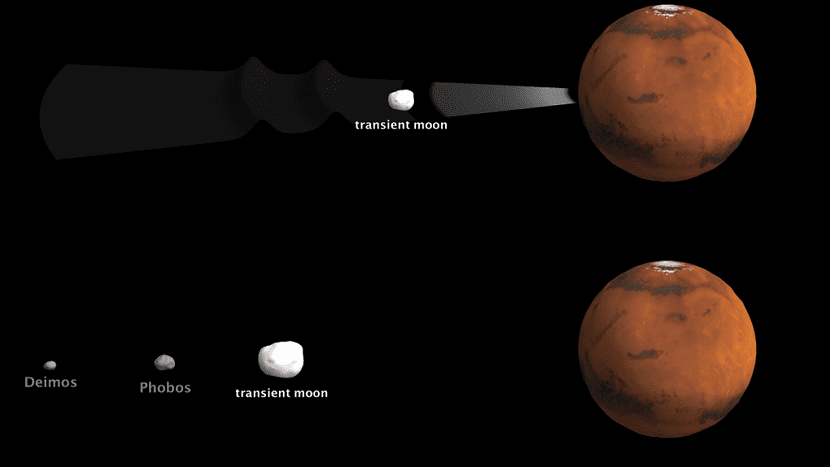
Our planet has only one satellite known as the Moon. Satellites are often called moons, referring to our own. He planet Mars It has two small moons that have a similar appearance to some potatoes and were discovered in the XNUMXth century. They are so small in size that they do not make up even a quarter of the Moon. There is a possibility that in a few million years they may not even exist anymore.
In this article we are going to reveal to you some of the most disturbing secrets of the moons of Mars.
Characteristics of the moons of Mars

The moons of Mars are only two. Their names are Phobos and Deimos. These are two irregularly shaped natural satellites that orbit this planet. They have a very small size if we compare it with the satellite of our planet, the Moon. We are going to analyze each satellite individually to better understand its characteristics:
Phobos
This satellite is only about 27 km in diameter. It orbits the planet at a distance of about 6.000 kilometers. In just 7 and a half hours it is capable of going around the planet completely. It has a large number of craters among which the Stickney stands out. This crater bears the surname of the discoverer's wife. The crater has become so famous because it has dimensions of 10 km in diameter. The surface is full of many furrows between 20 and 40 meters deep. These furrows do not exceed 250 meters wide.
The surface of Phobos is flooded with dust, reaching almost a meter high. This is thought to be due to the constant impacts suffered by Phobos from smaller meteorites.
Deimos
Let's go on to describe the other satellite of Mars. This satellite is even smaller than Phobos. It only has 12 kilometers in diameter. Like Phobos, it also has an uneven surface. Due to its low mass, gravity has not been able to round the surface. Therefore, it is said that they are shaped like potatoes.
It orbits much further than Phobos. At a distance of about 23.500 kilometers from the center of Mars. Unlike the other satellite, it takes Deimos about 30 hours to go around Mars. It does not have such wide craters, but they are smaller. About 2,3 km in diameter. By having a lot of these, it makes it look smooth at times.
The two moons of Mars always show the same face, as happens with our satellite. This is due to the tidal forces that anchor it.
The moons of Mars from the planet

Phobos orbits Mars at a very fast speed. This is due to its closeness. It is one of the reasons why it is able to go around the planet in such a short time. From the surface of Mars it is as if it came from the West to the East. Unlike what happens with Deimos, which can be seen from Mars as if it were a star due to its size and distance. It can be seen that it comes from the East to go to the West. Phobos could be seen in a day on Mars around 3 times. On the other hand, Deimos would only be seen every other day, due to the time it takes to orbit Mars.
At the beginning of the seventeenth century, Johannes Kepler could predict if Jupiter had 4 moons and Earth only one, that on Mars there would be two orbiting, since it would surely have to have two moons. This assumption was correct as we can see today. The problem with that theory is that Jupiter did not have 4 moons, but many more. The discoveries took a long time to occur, due to their small sizes compared to the other moons of other planets.
By August 18, 1877, the astronomer Asaph Hall, under pressure from his wife Angeline Stickney, was able to discover the two satellites at the Washington Naval Observatory. Today it can be seen with an amateur telescope as small as 20 cm or more. The day of its discovery was involved with a 66 cm aperture telescope.
Origin of the moons of Mars

To explain the possible origin of the moons of Mars, there are several theories. One of them is the one that suggests that they may come from the Asteroid belt that orbit between Mars and Jupiter. This theory can facilitate the explanation of why they have this irregular shape.
There are also other theories that raise the possibility that these natural satellites have a provenance the same as happened with the Moon. That is to say, there was a time when they were part of Mars and that due to meteorite impacts they detached from the planet to stay orbiting it.
Curiosities

We are going to list some of the most important curiosities that the moons of Mars have:
- Phobos is separated from Mars 9.380 kilometers from the center. With every century that passes, it gets 9 meters closer to the surface. This is due to the action of gravity. This means that, within 40 million years, Phobos ends up colliding with Mars.
- Unlike what happens with the Moon, these satellites do not reflect sunlight because of their size. This means that at dusk, everything is in twilight and the planet does not have any type of illumination.
- The moon Deimos is moving further and further away from the planet Mars. Each time it has a longer route and it takes more time to complete a complete revolution. In a few million years, Deimos will no longer be part of the Martian system. This will make it a drifting asteroid until it orbits another planet or roams the universe. These events would spell the end of the moons of Mars.
I hope this information helps you to know more about the moons of Mars and their curiosities. As you can see, nothing is forever, and although the time scale of the universe has nothing to do with the human scale, there is also an alpha and an omega.